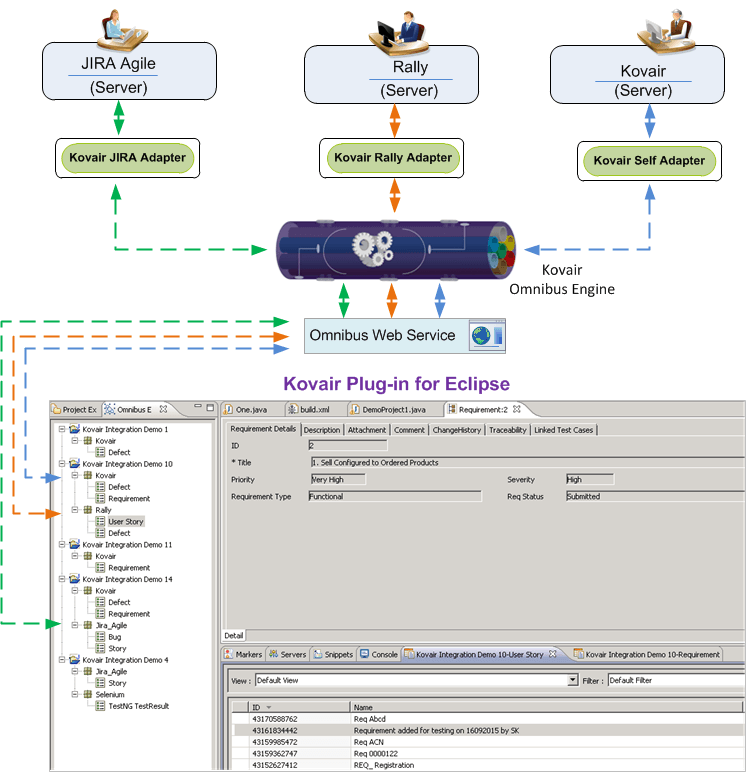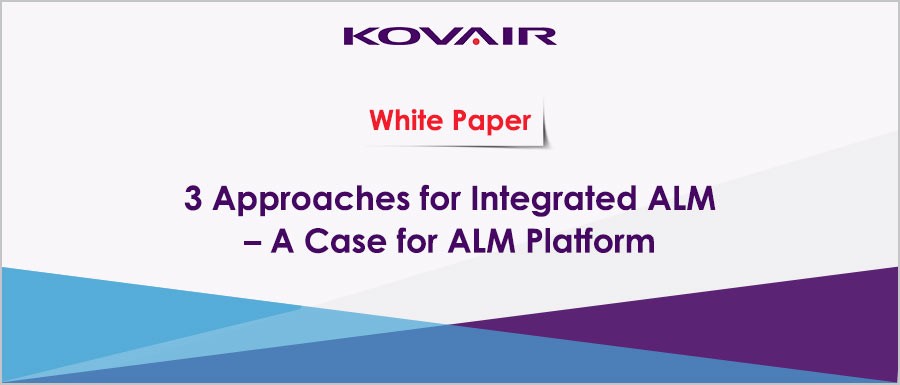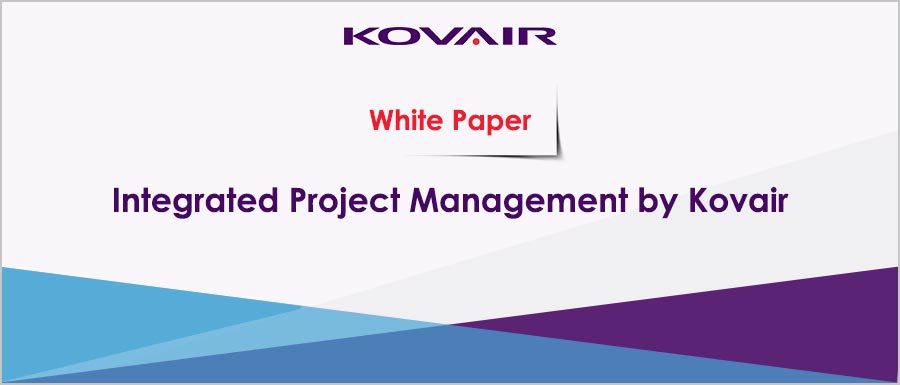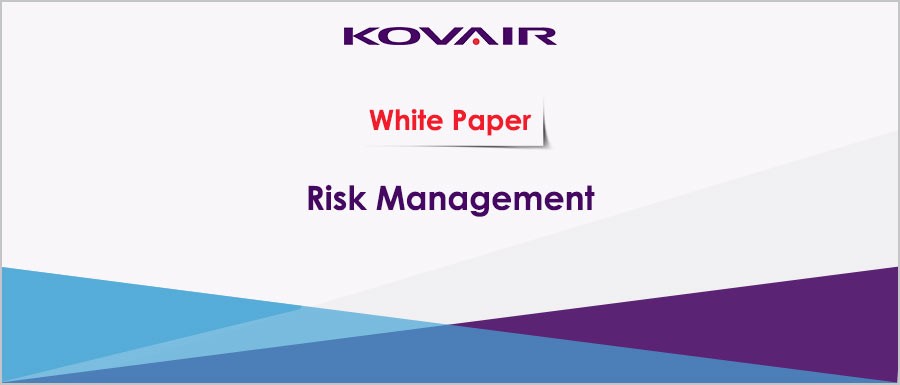
Defining Requirements
How do you add a Requirement to Kovair?
In Kovair, you can define and add Requirement in the following ways:
- Using Rich Text Editor: The formatting includes font, color, table, bullets, numbering, and embedded images. Multiple Undo-Redo, adding symbols and embedded links to other Requirements are possible in Kovair. Additional Rich Text custom fields can also be defined in Kovair.
- Submitting from your Corporate Website or Portal
- Sending Email
- Importing from Microsoft Word Document
- Importing from Microsoft Excel Spreadsheet
- Importing from a CSV file in configurable format
- Importing from any third party Requirement Management and other tools to define Requirements and real-time synchronization of data with Kovair.
Are there specific attributes for each Requirement?
Yes, there are few System defined attributes for Requirements. But more importantly, Kovair allows you to create as many user-defined or Custom Fields for the Requirements. Attribute Fields can be created based on the following data types some of which are typical but others (highlighted here) are unique to Kovair and lend to the power of Kovair configurability: Date, Date Time, Float, Float with 2 Decimal, Integer, Custom Lookup (Single and Multiple), Multi-Line Text, Single-Line Text, Calculated Field, Grid Field, Rich Text, Electronic Signature Field, Summary Field, and Relation Type Field.
Can Requirements be imported from Word documents?
Kovair supports import of word documents in two different ways. Word documents can be uploaded in the application and records can be imported from the document by parsing the document. Advanced level word import can be done by installing a word add-in at client machine.
Do Requirements maintain Allocation of unique ID number (unique across database)?
For each entered requirement, Kovair generates a unique ID number. This number is unique across databases and projects.
Are Import and display of figures within tool allowed in the context of other Requirements?
Kovair Requirements Management supports import and display of figures. These figures can be embedded within description of a requirement. They can be also maintained as attachment of requirements.
Managing Requirements
Can Requirements be prioritized?
Yes, prioritization can be done manually by setting the Priority attribute for each Requirement, or it can be done in a more structured and dynamic way:
- Collaborative Ranking: Using this feature, the Evaluators can individually rate a Requirement based on certain criteria. This helps in arranging the Requirements in the Priority List based on the score that each one has received from the evaluators during the evaluation phase.
- Decision Support System (What If Analysis): It supports business and organizational decision making activities and helps the organization to prioritize requirements based on certain constraints into different buckets, e.g. Releases.
Can we define a workflow for Requirement revision process within the product?
Yes, Kovair application has a built-in drag-and-drop Visual Workflow / Process designer that allows users to define a Task-based Process for not only Requirements but for each of the phases of the Application Lifecycle and automate them. During the Process execution, it automatically generates Tasks for the Roles or users as defined in the Process. Here is an example of a custom Requirements revision process:
Can the Requirements be edited in bulk?
Kovair provides this ability through multi-edit screen. The bulk edit screen of Kovair provides facilities like multiple cell selection and filling them with a value just like the fill feature of MS Excel.
Should the tool support complex display filters / queries against multiple fields for presentation of a subset of Requirements?
Kovair has support for different types of filters ranging from simple to complex. The advanced filter option of Kovair allows users to create expressions or formulas using different attributes of requirements along with constant values.
Does the tool support copy / paste functions for common documentation objects and convert them into Requirements descriptions?
Kovair provides a Rich Text Editor for entering descriptions of requirements. Being a web based application, copy-paste option of texts from other documents are supported by all browsers. Insertion of images are possible only when Chrome or Firefox are used because IE does not support this feature. MS OLE Objects are not supported.
Is there an ability to define diagrams within tool?
Kovair has support for defining diagrams within the tool. Different types of diagrams like UML, Wireframe, UI Mockup, and Flowchart are supported.
Can we create user defined Requirement types?
Kovair has extensive support for custom fields. There are 21 different types of fields under 6 different categories. Any attribute of requirement can be defined using these fields. Once defined, these fields can be used for any operations like filter, view, process and others.
Is it possible for Requirements to be grouped by different attributes or relations?
Kovair supports both single and multi-level group by views where Requirements can be grouped as per different attributes of requirements.
Is there a visual hierarchy of Requirements?
Yes, there are a couple of ways this can be achieved – by having a hierarchical Requirements (by defining parent-child spatial relation) or by using other Traceability relationship. Using relationship Kovair allows multiple many-to-many relations and hence multiple visual hierarchy. A View or a Word Report can be created in this regard to show the visual hierarchy of requirements.
Can a Requirement have more than one parent?
If you are using the Sub Item functionality, one requirement can have only one parent. But if you are using many-to-many Traceability Relation Type field then the same requirement can be a child of multiple parent requirements – to whichever it is linked by means of the relation “Parent – Child Relation”.
What are the different Views possible for Requirements?
Kovair provides two types of views – one without description and another with description similar to a document. To view a list of Requirements, Kovair provides two controls – View and Filter. Using these controls one can define the visible columns, ordering, grouping as well as what rows one wants to see. Below is an example of list of Requirements grouped by Release, Requirement Type and by Priority. Users can create their own Views and Filters.
Document View of Kovair gives a flexible way to look at a subset of Requirement descriptions and some other selected field values sequentially in a document format. Any of the Requirements can be edited in-place. The descriptions are shown with full rich-text formatting.
Will the tool support Requirements with attachments?
Kovair supports three types of attachments like – File, URL and Note.
Can we keep track off costs (man hours and $) for each Requirement?
Yes, there are a number of attributes provided by the tool, out of the box, for tracking the cost (Planned as well as Actual) of each Requirement. For example, Planned Cost, Actual Cost, Planned Duration (in hrs.), Actual Duration (in hrs.), Planned Work, Actual Work, etc. Additionally, Kovair lets you create Custom Fields of various data types that also can be used in this regard.
Can we search Requirements database using keywords?
Kovair supports both keyword and id based search from database using the attributes of requirements.
Can we restrict two people from editing a requirement at the same time while online?
Kovair does not allow multiple people to edit a requirement at the same time. This gets imposed through implicit locking mechanism. When a user edits a requirement the record gets implicitly locked until the edit is complete. Users can also explicitly lock records till the edit is complete.
Traceability
Can we view the entire life cycle of a requirement – viewing all interdependencies along the way?
Yes, Kovair has extensive support for bi-directional traceability between artifacts. Kovair also provides unique capability of defining relationships between artifacts along with the cardinality between them. Kovair supports Traceability among the different entities i.e. Requirements, Use Cases, Test Cases, Issues and Releases by means of which you can link one entity item to another and establish a chain which can be used to view the entire Lifecycle of a Requirement.
Can we analyze the impact of any change in the Requirement?
Yes, with the help of relationships between artifacts, Kovair provides the capability of doing both proactive and reactive impact analysis. Users can easily find out the impact of any change in the requirement or on other artifacts associated with the requirement irrespective of the depth of their relations.
Can we trace a given Requirement to design documents in the version control history?
Yes, this can be achieved by means of Kovair Traceability Relationships.
Can we trace a given Requirement to a source file in the version control history?
Traceability to a source file in a version control software can be achieved by means of Kovair Traceability Relationships with the integrated version control system. Currently, Kovair is integrated with ClearCase, Perforce, TFS and Subversion and GIT configuration management systems. Customer preferences can determine the use of any one of these.
Can we trace a Requirement in a release to the “currently in-progress” tasks?
Yes, from the Processing History layout available with each Requirement, we can view the list of all the currently in progress tasks, specific to a requirement. If such a task is generated from the Requirement Process, then we can also view those in progress tasks from the Visual Designer of the process diagram available in the Process Status layout.
Can we trace a line of code back to a Requirement?
Kovair integrates with several configuration management tools. With some configuration management/ version control system e.g. Subversion, one can create a traceability relation between requirements and the lines of codes in the source files.
How can we view the Traceability Relations?
Kovair gives a number of different tools to view Traceability Relations:
- Traceability View: This hierarchical textual view shows all related items as children of each item to multiple nested depth.

- Traceability Matrix: This view shows the relation between the Requirements (and other Entities if they are defined) in a grid format. This view not only shows the relationship, but one can create and manage these relationships directly from the view.

- Traceability Relation Diagram: This view shows the relation between the Requirements (and other Entities if they are defined) in a network diagram format. This view not only shows the relationship, but one can create and manage these relationships directly from view as well.

Can we have true associations between a Requirement and other documents/test plans/use cases?
Yes, Traceability Relationships can be defined among the above specified entities – Requirement, Use Case, Test Plan, and Design Documents, etc.
How easily will the tool integrate with other software currently in place here?
Yes, Kovair’s SOA based Omnibus Integration technology provides a vendor-neutral ALM platform which allows the integration of various ALM tools using Kovair Adapters. It ensures cross-lifecycle transparency, macro and micro-level processes automation, and correspondence of activities across the disciplines with bi-directional data transfers between tools.
Can we define use cases/user stories against a Requirement?
Yes, Traceability Relationships can be defined between the entities – Use Case and Requirement.
Can we associate test plans/specs to a Requirement?
Yes, Traceability Relationships can be defined between the entities Test Plan and Requirement.
Can we trace a line of code back to design documents?
Yes, Kovair’s integration with configuration management/ version control tools e.g. ClearCase makes this possible. Kovair has multiple adapters currently available for these integrations.
Collaboration & Notification
Can two or more users contribute to a set of Requirements at the same time and do collaborative review?
Kovair provides a collaborative platform for discussions as well as review of requirements. Users from different geographies can do real-time discussions in Kovair. It enables real-time communication between Analysts, Engineers, QA Members and DevOps Teams etc. via threaded discussions, notifications, & more.
Can users post comments directly in the tool as part of the Requirement review process?
Kovair has full support for Rich Text based comment. Users can provide attachments with the comments. With the help of business rules engine of Kovair, users can even get notified whenever a comment is posted against a requirement.
Can we have emails based on different events?
Yes, Kovair allows a robust event based notification system. Various events for Requirements Management are defined (e.g. Requirement Created, Edited, Comment Added, My comment replied) and for each event a custom notification mail may be created with macro variables which are replaced by contextual value during runtime.
Can we send emails based on complex condition?
Yes, Kovair has a Business Policy engine which allows you to automate many business rules. Using the Policy engine you can define complex conditions and multiple actions. The actions include sending notification emails along with create task, start/ stop process, and create traceability.
Can users subscribe for notifications when a given Requirement or a set of Requirements changes?
Kovair has support for subscribing to individual requirements. When a user subscribes to a requirement, any changes that take place in the requirements for satisfying that filter criteria, the user receives a notification. Kovair supports both textual and HTML based notifications, and the templates for the notification can be customized using simple mouse clicks without the need for coding.
Is it possible to assign different levels of permissions to users for different purposes?
Kovair has facility of providing access at various levels starting from enterprise level access to record level access. Based on these accesses, records can be selectively exposed to different set of users as per the business need.
Revision History, Versioning, Baseline
Is there a version control system in the tool?
Yes, Kovair distinguishes between Updates and a true Version Change to a Requirement. For versioning, Requirements trigger audit trails and traceability impacts. Each version also stores its contextual threaded Comments with all attachments. Kovair also allows branching and merging in the versions. Kovair’s version diagram is the only visualization tool in the market to graphically represent various versions of a Requirement and working with them by using drag-and-drop interface.
Can we keep track of who edited the Requirements and when?
Yes, to keep track of the latest change in a Requirement, Last Modified By and Last Modification Date, there are the two attributes provided by Kovair’s out-of-the-box solution. It keeps track of the user and the date for the change. Additionally, the tool provides Change History for each Requirement that keeps track of who, when and what has been changed, what was the old value, and what is the new value.
Can we baseline Requirements for each release?
Yes. Baseline is a snapshot of selected Requirements (and other Entities, if they are defined) at specific version numbers. During the development process, multiple Baselines are created to track different milestones.
Can we compare between Baselines?
Two Baselines can be compared with ease for the differences in the included Requirements. The comparison also highlights differences between two different versions of the same Requirement included in those Baselines and highlights them for comparison.
Can we roll back to a previous version of a baseline or Requirement?
Users can maintain different versions of a requirement as well as create baselines. These versions can be compared side by side and can be rolled back to any previous version. Users can roll back the entire requirement as well as the value of certain attributes based on their requirement.
Administration and Access Control
Is it possible to assign different levels of permissions to users for different purposes?
Kovair has facility of providing access at various levels starting from enterprise level access to record level access. Based on these accesses, records can be selectively exposed to different set of users as per the business need.
Is there a security model in place to ensure that certain users have read-only rights?
Yes, Kovair allows Administrator to create unlimited Access Groups (User Groups). Users can be assigned to various Access Groups. This will determine their privileges or rights in viewing the entity records in the system. You can define the scope for users in adding, editing, viewing records for any custom entities defined.
Are there different roles/user types, dependent on what that user needs to see/edit?
Yes, Roles or User Types can be defined in Kovair. What that Role or User Type should view/ edit is managed from administrative function – Access Group. Access Group is formed by a set of defined access rights or privileges. Those privileges consider what records a group member can view, and what they can edit. So, by associating the Role or User Type with Access Group, view or edit accesses on Requirements can be controlled.
Can we restrict permissions based on the status of a Requirement (e.g. restrict customers from viewing a requirement if it’s in draft status and hasn’t been approved)?
Filter based permissions can be given to users for different operations like view, edit, and deletion of records.
Can we manage access permissions for groups?
Kovair provides role and group based security at both enterprise level and record level to control login, editing of requirements and its attributes. Based on the roles and responsibility of a user in the organization, these accesses can be configured.
Can we manage access permissions for individual users?
Kovair allows organizations to manage permissions at user level. Permissions to individual users can be given directly or through groups to which they belong to.
Export and Reports
Will we be able to generate a report?
Users in Kovair can generate 9 different types of reports including graphical and textual reports. Word based documents like SRS/MRD/PRD can also be generated from Kovair.
Is there a Dashboard capability?
Yes, Kovair has a very colorful dashboard capability. Multiple graphical and textual gadgets can be put on a Dashboard which are displayed with real-time data. There can be multiple Dashboards.
Can we derive a product road map from the Requirements repository?
Yes, you can create a Roadmap in a Word Report format.
Can we report on predicted schedule driven from estimated effort and actual effort?
Yes, Kovair integrates with Microsoft Project. The estimated time against each of the Requirements are exported to Microsoft Project to create a scheduled plan. Kovair also has its own Project and Resource Management capabilities in its product.
Can the software produce the following (or something similar to the following)?
- Marketing Requirements Document: Yes, Kovair can create a fully formatted Word Document for MRD based on item #26 above.
- Impact Reports: Yes, Kovair can prepare a Word Report called ‘Change Impact Analysis’ where it displays Requirements (categorized by Release), and against each Requirement, impacts are calculated for linked Use Cases, Development Packages, and Test Cases.
- Version report: Yes, a report can be created for selected Requirements with the complete version history for each.
- Roadmap report: Yes, you can prepare a Word Report called ‘Product Roadmap Planning’. The report displays Requirements grouped by their Release and Product Type. For each Requirement, apart from its fields, other information like – comments, linked items (Development Package, Use Cases, and Test Cases) are displayed.
- Progress report: Yes, a progress report can be created with information about the completed and open process tasks.
How do we customize reports to include any attributes of Requirements?
Users in Kovair can generate 9 different types of reports including graphical and textual reports. Word based documents like SRS/MRD/PRD can also be generated from Kovair. These reports can include both system and custom defined attributes of a requirement.
Integration with other tools and phases
How easily will the tool integrate with other software currently in place here?
Yes, Kovair SOA architected ESB platform Omnibus enables organizations to setup an integrated environment for development without replacing their existing tools. Currently Omnibus has integrations with 80+ tools. These tools are from different functional areas, vendors, open sources and technologies.
Can the software integrate the Requirements with other functional phases like testing residing in other tools?
Yes, using Kovair Omnibus integration platform, users can link the requirements with test artifacts residing in any other test management tool.
Can the software integrate with outlook and pull the requirements from there?
Yes, Kovair has integration with outlook. Users can convert any mail item into requirements through this integration.




















